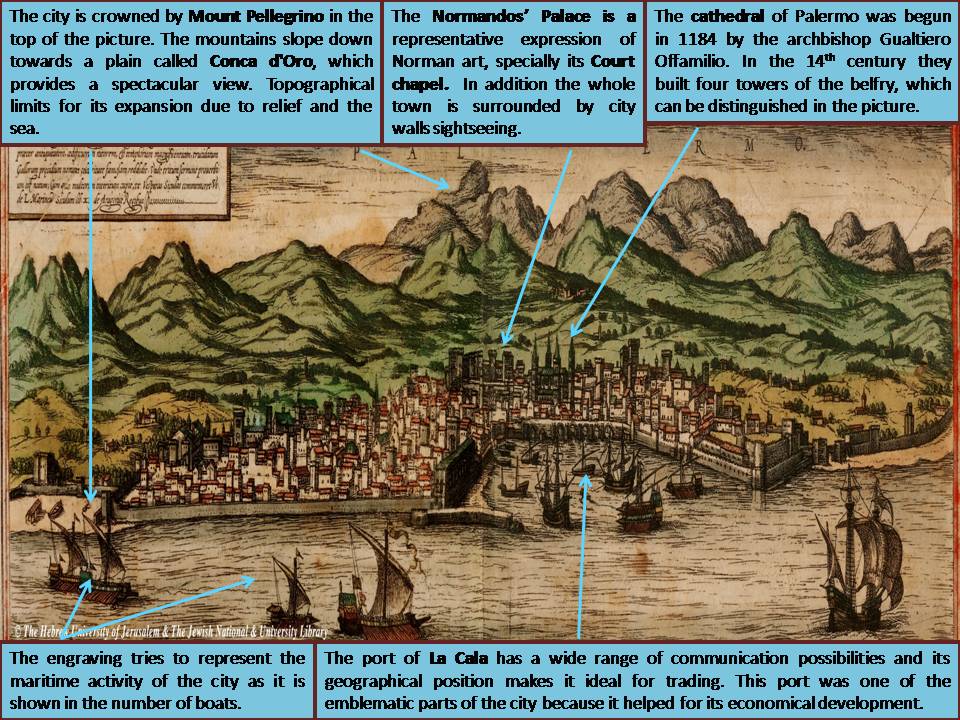PALERMO (Braun & Hogenberg, 1572)
This work of art belongs to an atlas made by Georg Braun and Hogenberg that is one of the most impressive collections of Renaissance cartography. It represents the city of Palermo and it surroundings in 1572. Georg Braun was a renowned geographer and is the author of over 500 maps and plans. Franz Hogenberg worked with him and made some designs as well. The picture is an engraving that centres its attention on urban life and commercial activities during XVI century. It portrays also some of the main elements of the city, such as the Port of La Cala or the Cathedral.
The city of Palermo is the capital and the most populated city of Sicily. It is located in the north of the island and has a very rich heritage related to its long history and its geographical position in the Mediterranean Sea. The urban planning of the city is a mixture between irregular and orthogonal, as a consequence of the unthinking growth and its spreading like a fan into a bay. In the picture, the city is crowned by Mount Pellegrino. The mountains slope down towards a green plain called Conca d’Oro which was depicted by the painter in a very attractive way. Palermo had a limited growth due to being limited by the topography and the sea. It offers spectacular panoramic views and a great variety of landscapes, for example rocky and rough mountains.
In addition, the whole city is surrounded by medieval city walls which main functions were to give protection to the city. In Modern Times the population settled in the outskirts, around the city walls. Nowadays Palermo has grown very much and it is divided in eight neighborhoods.
At the bottom we can see the port of La Cala. Due to the fact that Palermo is located by the Tirreno Sea, it has a wide range of communication possibilities and its geographical position makes it ideal for trading. Furthermore, the engraving tries to represent the maritime activity of the city with the different boats in the water. On the other hand, nowadays Palermo is a city where the principal economic activity is tourism, for being such a cultural city.
Palermo has preserved the cultural legacy of all its conquerors: Carthaginians, Romans, Byzantines, Arabs and Normans, who left visible archaeological and architectural remains in the city. Among the narrow streets you can find houses of Arabic and Norman style, Baroque churches and other monuments. In the picture we can appreciate the Cathedral of Palermo which is distinguished by its very well-known four towers. Although the exterior of this building is mainly Gothic, the interior has a neoclassic style. Next to the cathedral we can appreciate another building that is the Normandos Palace, also known as Royal Palace. The palace was constructed by the Arabs as a fortress in the 9th century, though later the Normans were who turned it into a palace. Its most representative expression of Norman art is the Court Chapel. Among the decorations we must stand out the Christ Pantocrator which is depicted in the apse. There are also other churches such as St John of the Eremites, composed by five impressive domes, that was raised up in the 12th century.
In conclusion, Palermo turned into one of the first cosmopolitan cities of the Middle Ages because the number cultures that were coexisting there. In addition, the city obtained very much prestige and development in fields like agriculture, arts, sciences and trade. This provoked that it was considered a European door towards East.
Ana Ortiz de Zárate Ruiz

